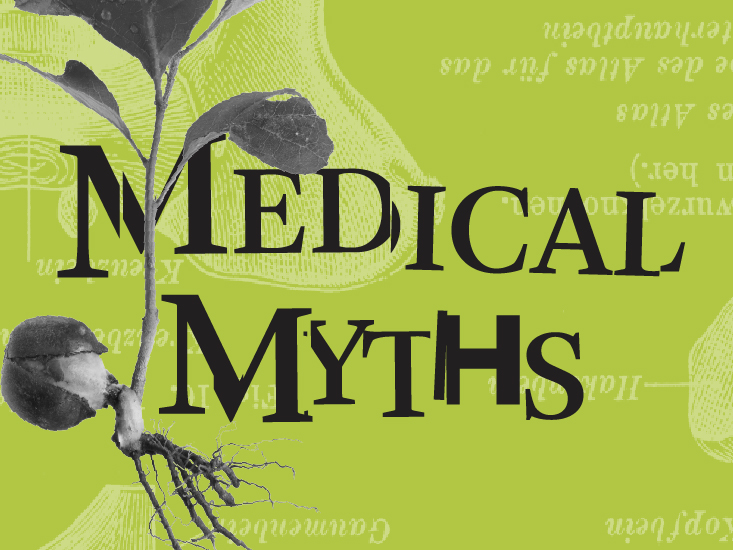Share on PinterestCan donating blood make you sick? Art by Diego Sabogal
In the United States, there are more than 13.2 million blood donors. Globally, people donate more than 100 million units of blood each year.
It is only possible to store blood for a limited time, so encouraging the routine donation of blood is key. As the World Health Organization (WHO) explains:
“A decision to donate your blood can save a life, or even several if your blood is separated into its components — red cells, platelets, and plasma — which can be used individually for patients with specific conditions.”
Medical News Today spoke with Dr. James F. Kenny, the associate chair of the Department of Emergency Medicine at Staten Island University Hospital, NY. He outlined the vital contribution of donated blood to society:
“Patients who have been subjected to major trauma, are under surgery, receive chemotherapy, or have disease of the bone marrow commonly require transfusion of blood products to survive. Transfusion of a blood product happens every 2 seconds in the U.S. — that’s 21 million transfusions per year!”
Article highlights:
1. Donating blood can make you sick
Anyone who is healthy before donating blood will not become less healthy afterward. Although doctors recommend that people rest for a day and drink fluids after donating, the health of these individuals is not in jeopardy.
Within an estimated 48 hours of donating, an individual’s blood volume returns to normal — predominantly through an increase in plasma. Within 4–8 weeks, the body will replace all of the lost red blood cells.
MNT spoke with Dr. Emanuel T. Ferro, Ph.D., a pathologist at MemorialCare Orange Coast Medical Center in Fountain Valley, CA, and director of the Blood Bank, Donor Center, and Transfusion Medicine at MemorialCare Long Beach Medical Center in Long Beach, CA. He told us:
“Blood donation is extremely safe. The vast majority of blood donors are able to donate a pint of blood in less than 15 minutes after completing a health questionnaire and having a mini physical with a check on their blood count to make sure it’s safe to draw their blood. Donor reactions are rare.”
It is true that there might be some side effects, though. Dr. John Raimo, chair of medicine at Long Island Jewish Forest Hills in Queens, NY, told MNT:
“It is possible to feel tired or lightheaded afterward. These symptoms will go away on their own, but you may want to drink some water and have a small snack to help. You may also feel sore or have a bruise on your arm.”
Dr. Kenny told MNT that “younger people and those who are of low body weight” are more likely to feel lightheaded, but that “can usually be prevented by drinking fluid before the donation.”
2. Older adults cannot give blood
This is not true. In the U.S., people who are older than 16 years and weigh more than 110 pounds (50 kilograms) can give blood.
It is worth noting, however, that the rules differ in some countries. For instance, in the United Kingdom, donors must be aged 17–66 years. However, people who have donated blood before can continue to provide blood until the age of 70.
Anyone who is older than 70 but has given blood in the previous 2 years is also still eligible to donate.
3. If someone is taking medication, they cannot donate
This is a partial myth. Individuals taking certain medications, including anticoagulants, antiplatelet medications, and some acne treatments, should not donate blood.
However, in most cases, medications do not mean that someone cannot donate blood.
Before donating, a person should speak with a medical professional to check whether their current medications affect their eligibility to be a donor. Just as importantly, if a doctor has prescribed a medication, people should not stop taking it to donate blood.
4. Giving blood is time consuming
Although registration and processing can take varying amounts of time, the procedure of donating blood only takes about 8–10 minutes. The American Red Cross explains that the “entire process takes about 1 hour and 15 minutes.”
5. You might contract an infection if I give blood
Dr. Ferro explained to MNT why there is no risk of catching an infection when donating blood:
“We use a sterile technique to prepare your arm before we place the needle to draw your blood. Infections at the ‘draw’ site are almost unheard of. All of the needles we use are new, sterile, and only used once, so there is no chance of catching a bloodborne infection from donating blood.”
![]() More in Medical MythsView All
More in Medical MythsView All Medical myths: All about allergiesWritten by Tim Newman
Medical myths: All about allergiesWritten by Tim Newman Medical Myths: All about arthritisWritten by Tim Newman
Medical Myths: All about arthritisWritten by Tim Newman Medical myths: All about cancerWritten by Tim Newman6. If I receive a transfusion, I might get an infection
Medical myths: All about cancerWritten by Tim Newman6. If I receive a transfusion, I might get an infection
Although not strictly related to blood donation, another common myth is that there is a high risk of infection when someone receives a blood transfusion. As Dr. Kenny explained to MNT:
“People can contract an infection from a blood transfusion if the blood is infected. [However,] this is very rare because the blood is rigorously screened for a number of viruses and bacteria. For instance, it is estimated the chance of contracting hepatitis C from a blood transfusion is about 1 in 100 million.”
7. Donating blood is painful
Again, this is a partial myth, as there is some pain as the needle goes in, but it is relatively mild and short-lived. Once the needle is in position, the donor should remain comfortable throughout.
Following blood donation, there may be some pain at the site of the needle’s entry. Some people experience bruising, but this is usually harmless and disappears in a matter of days.
8. You can only give blood once each year
This is not true. Once blood cells have replenished, which takes up to 8 weeks, it is safe to donate blood again. Due to this, the American Red Cross advises that people can give whole blood every 56 days.
9. People who have tattoos or piercings cannot donate
This is a long standing myth, but it is still a myth. The American Red Cross says to “[w]ait 3 months after a tattoo if the tattoo was applied in a state that does not regulate tattoo facilities.”
Similarly, it explains that giving blood after a piercing is “[a]cceptable as long as the instruments used were single-use equipment and disposable (which means both the gun and the earring cassette were disposable).” However, it asks potential donors to wait “3 months if a piercing was performed using a reusable gun or any reusable instrument.”
10. You cannot donate if you have high blood pressure
This is not always true. As long as someone has systolic blood pressure lower than 180 millimeters of mercury (mm Hg) and diastolic blood pressure lower than 100 mm Hg, they can donate blood.
Although certain medications mean that it is not possible to give blood, drugs for high blood pressure do not make someone ineligible to be a donor.
11. You cannot donate if you have high cholesterol
This is untrue — neither high blood cholesterol levels nor cholesterol-lowering drugs disqualify someone from donating blood.
12. Vegetarians and vegans can never donate blood
This is another myth. As Dr. Ferro explained to MNT, these individuals “can [donate] as long as they meet all of the health screening requirements to donate blood. Some vegetarians/vegans do not ingest adequate iron and may be borderline anemic. However, we screen each donor for anemia, and potential donors [with this condition] are not allowed to donate.”
13. Enough people already donate blood
Sadly, this is not true. As blood has a limited shelf life, maintaining adequate supplies is an ongoing challenge. As Dr. Raimo explained to MNT: “Donated red blood cells must be used within 42 days. Donated platelets must be used within 5 days. Because of this, donated blood needs to be replenished constantly, and we are always looking for more volunteers to donate.”
Dr. Ferro also underlined the importance of blood donation:
“There is always a need for more blood donors. […] The number of qualified blood donors is smaller than most people think. Each donor is carefully screened for the presence of infectious diseases and other conditions that might make their blood unsuitable to give to other people. A constant supply of qualified donors is needed to meet patient needs.”
Dr. Kenny reiterated this message, explaining that “only about one-third of the U.S. population is eligible to donate blood, [and] only about 3% of these potential donors give blood on a regular basis. […] Many patients require a specific type of blood. Blood banks can sometimes have adequate supplies of one blood type and, at the same time, have a critical shortage of another type.”
After completing a bachelor’s degree in neuroscience at the U.K.’s University of Manchester, Tim changed course entirely to work in sales, marketing, and analysis. Realizing that his heart truly lies with science and writing, he changed course once more and joined the Medical News Today team as a News Writer. Now Senior Editor for news, Tim leads a team of top notch writers and editors, who report on the latest medical research from peer reviewed journals; he also pens a few articles himself. When he gets the chance, he enjoys listening to the heaviest metal, watching the birds in his garden, thinking about dinosaurs, and wrestling with his children.
You can follow Tim on Twitter.

![]() More in Medical MythsView All
More in Medical MythsView All Medical myths: All about allergiesWritten by Tim Newman
Medical myths: All about allergiesWritten by Tim Newman Medical Myths: All about arthritisWritten by Tim Newman
Medical Myths: All about arthritisWritten by Tim Newman Medical myths: All about cancerWritten by Tim Newman
Medical myths: All about cancerWritten by Tim Newman
Source link : https://www.medicalnewstoday.com/articles/medical-myths-all-about-blood-donation











